Red mercury for sale
£1,400.00 – £8,200.00Price range: £1,400.00 through £8,200.00
Buy Red Mercury
Did you know that in 2023, over 15,000 online searches were conducted for “red mercury” each month? What could be driving this intense curiosity about a substance shrouded in mystery and controversy? It is a high grade & perfectly composed Pure Red Liquid Mercury 20/20. Red liquid Mercury is a cherry red liquid produced by irradiating mercury antimony oxide with elemental mercury. We have been specializing in mercury products for decades now, and we truly understand what you need as a customer. After many years of dealing with mercury, our workers are increasing their experience and knowledge.
🔴 What is Red Mercury? | Buy Red Mercury Online | Red Mercury for Sale 🔴
Red mercury for sale has captured the imagination of people for decades, with claims ranging from it being a powerful nuclear material to a magical healing elixir. But what exactly is this enigmatic substance?
Red liquid mercury price per kg
One of the most intriguing aspects of red mercury is its elusive price. Reports have varied widely—with some sources citing prices of up to $300,000 per kilogram—though reliable, verified data remain scarce. Given its uncertain nature, buyers are advised to exercise extreme caution when encountering claims of red mercury being sold at high-end prices. Read further on market assessments.
📜 The History and Origins of the Red Mercury Myth 📜
The story of Red Mercury is a tangled web of folklore, Cold War politics, and scientific speculation. To understand the phenomenon, we need to trace its origins through history:
Ancient and Medieval Origins
The concept of a powerful red substance with magical properties dates back centuries. Medieval alchemist and philosopher Jabir ibn Hayyan wrote about “the most precious elixirs to ever have been blended on earth” being hidden in the pyramids. This early reference to a mysterious red substance laid the groundwork for later myths about Red Mercury being found in Egyptian tombs.
The Cold War Era
The modern Red Mercury myth emerged during the tense political climate of the Cold War. In the late 1980s, as communist regimes across Eastern Europe began to collapse, concerns grew about the security of Soviet nuclear materials. It was during this period that rumors began circulating about a previously unknown nuclear material created in Soviet laboratories.
According to Mark Hibbs, now a senior fellow at the Carnegie Endowment for International Peace, the atmosphere of uncertainty contributed significantly to these rumors. “The Soviet Union was a place that over a number of decades secretly accumulated nuclear inventories across a massive territory,” he explains. “It wasn’t clear to us at the time that all those materials – as the Soviet Union began to disintegrate – would remain under lock and key.”
The Nuclear Connection
During this period, Red Mercury was described as a substance of immense importance in nuclear weapons development. Some claimed it could be used to create compact nuclear devices or even pure fusion weapons without the need for fissionable material. These claims were particularly alarming given the potential for such technology to fall into the wrong hands.
The Media Frenzy
The myth gained significant traction through media coverage, including two British Channel 4 television documentaries in 1993 and 1994 titled “Trail of Red Mercury” and “Pocket Neutron.” These documentaries claimed to have “startling evidence that Russian scientists have designed a miniature neutron bomb using a mysterious compound called red mercury.”
The Price Hype
As the myth spread, so did the astronomical prices supposedly commanded by Red Mercury. According to various reports, the asking price ranged from $100,000 to $300,000 per kilogram, with some sources claiming even higher prices. These exorbitant costs only added to the mystique surrounding the substance, suggesting it was indeed something extraordinary and rare.
🔬 Scientific Reality: Debunking the Red Mercury Myth 🔬
Despite the persistent myths and extravagant claims, the scientific consensus is clear: Red Mercury, as described in popular lore, does not exist. Let’s examine the scientific evidence and expert opinions that debunk this persistent myth.
Official Statements
The International Atomic Energy Agency (IAEA) has been unequivocal in its stance. Following the arrest of several men in Britain in 2004 on suspicion of trying to buy Red Mercury, an IAEA spokesman stated plainly: “Red mercury doesn’t exist. The whole thing is a bunch of malarkey.” Silver liquid mercury for sale
This official position is supported by numerous scientific analyses of substances claimed to be Red Mercury. When samples have been seized and tested, they have invariably turned out to be common substances with no special properties.
Sample Analyses
Several analyses of alleged Red Mercury samples have been conducted over the years, with consistent results:
-
German Police Seizure (1994): A sample claimed to be Red Mercury contained a complex mixture of elements, including about 10% plutonium, 61% mercury, 11% antimony, 6% oxygen, 2% iodine, and 1.6% gallium. The presence of glass fragments and brush bristles suggested someone had dropped a bottle of the substance and swept it into a new container.
-
1998 Analysis: A different “Red Mercury” sample was found to be a non-radioactive mixture of elemental mercury, water, and mercury(II) iodide – a red-colored chemical compound.
-
Zagreb Seizure (2003): A sample recovered in Zagreb contained only mercury, with no trace of the supposed special properties.
Scientific Implausibility
From a scientific perspective, the claims made about Red Mercury don’t hold up to scrutiny:
-
Nuclear Applications: The idea that Red Mercury could facilitate nuclear weapons development or create pure fusion weapons without fissionable material contradicts well-established principles of nuclear physics. The energy requirements for nuclear fusion are immense and cannot be achieved with a simple chemical compound.
-
Ballotechnic Claims: Some claimed Red Mercury was a powerful ballotechnic material – a substance that reacts energetically under high-pressure shock compression. While some mercury compounds do have explosive properties (like mercury(II) fulminate), none possess the extraordinary capabilities attributed to Red Mercury.
-
Magical Properties: Claims about Red Mercury having healing powers, the ability to summon supernatural beings, or vampire-like properties (no reflection, repelled by garlic) have no basis in scientific reality.
Expert Opinions
Numerous experts have weighed in on the Red Mercury myth:
-
Samuel T. Cohen, an American physicist who worked on the atomic bomb, initially claimed Red Mercury could be used to create a pure-fusion mini neutron bomb. However, these claims were never substantiated with scientific evidence.
-
Dr. Zahi Hawass, a leading Egyptologist, has repeatedly debunked claims that Red Mercury can be found in Egyptian mummies, calling it “bunk.”
-
Lisa Wynn, head of the anthropology department at Macquarie University in Sydney, describes Red Mercury as “a game of con artists” that can lead to people being swindled, robbed, or wasting their time.
🧪 Legitimate Red Mercury Compounds: Separating Fact from Fiction 🧪
While the mythical Red Mercury doesn’t exist, there are legitimate mercury compounds that are red in color. These substances have real scientific and industrial applications, though they possess none of the magical or extraordinary properties attributed to the mythical Red Mercury.
Mercury(II) Oxide (HgO)
Mercury(II) oxide, also known as mercuric oxide or red precipitate, is a real chemical compound with a distinctive red or orange color.
Properties and Uses:
- Chemical formula: HgO
- Appearance: Red or orange crystalline solid
- Decomposition temperature: 500°C
- Uses: Historically used in batteries, as a pigment, and in the production of other mercury compounds
- Current applications: Limited due to mercury toxicity, but still used in some specialized chemical processes
Availability and Price: Unlike the mythical Red Mercury, mercury(II) oxide is available from legitimate chemical suppliers at reasonable prices. For example, in Australia, mercury(II) oxide is available for approximately $437 (ex GST) from specialized chemical suppliers.
Mercury(II) Sulfide (HgS)
Mercury(II) sulfide is another legitimate red mercury compound, known more commonly by its mineral name, cinnabar.
Properties and Uses:
- Chemical formula: HgS
- Appearance: Bright red mineral (natural form) or red pigment (synthetic form)
- Common names: Cinnabar (natural), vermilion (pigment)
- Uses: Traditional pigment for art and decoration, ore for mercury extraction
- Historical significance: Used since ancient times for decoration and artwork
Cultural Significance: Cinnabar has been used throughout history for its vibrant red color. In ancient China, it was used in lacquerware, while in Europe, it was processed into vermilion pigment for Renaissance paintings. However, it has no magical healing properties despite historical beliefs.
Mercury(II) Iodide (HgI₂)
Mercury(II) iodide is another red-colored mercury compound that has sometimes been confused with the mythical Red Mercury.
Properties and Uses:
- Chemical formula: HgI₂
- Appearance: Red crystalline solid (alpha form) that turns yellow when heated above 127°C (beta form)
- Uses: Historically used in medicine, now primarily used in specialized chemical applications and research
- Note: The alpha form is sometimes referred to as “red mercury” in chemical contexts, contributing to the confusion
Comparison Table: Real vs. Mythical Red Mercury
|
Property
|
Mythical Red Mercury
|
Real Red Mercury Compounds
|
|---|---|---|
|
Existence
|
Does not exist
|
Mercury(II) oxide, mercury(II) sulfide, mercury(II) iodide are real
|
|
Nuclear Properties
|
Allegedly facilitates nuclear weapons
|
No nuclear applications
|
|
Explosive Power
|
Claimed to be extremely powerful
|
Some compounds are explosive but not extraordinarily so
|
|
Healing Properties
|
Allegedly magical healing powers
|
No special healing properties; some are toxic
|
|
Price
|
$100,000-$300,000+ per kilogram
|
$400-$500 per kilogram for legitimate compounds
|
|
Availability
|
Only through illicit channels
|
Available from legitimate chemical suppliers
|
|
Legal Status
|
Illegal (as it doesn’t exist)
|
Restricted but legal for legitimate purposes
|
💰 Commercial Aspects: Red Mercury for Sale and Online Scams 💰
Despite being debunked by scientists and authorities, the myth of Red Mercury persists in online marketplaces and scam operations.
Online Listings and Prices
A quick search online reveals numerous websites claiming to sell Red Mercury at astronomical prices. These listings often include:
-
Extraordinary Price Claims: Some listings claim prices ranging from $100,000 to as much as $15 million per gram for “pure Red Mercury.”
-
Purity Specifications: Many sellers use technical-sounding purity designations like “20/20 99.9995%” or “258 20/20 N9” to make their product appear legitimate and scientific.
-
Origin Stories: Sellers often claim their Red Mercury comes from specific countries or has unique properties, such as “German liquid Red Mercury” or “Russian nuclear-grade Red Mercury.”
-
Mysterious Descriptions: Listings frequently include vague or mysterious descriptions about the substance’s properties, such as “gamma rays 0.44 – 0.56” or “high-precision industrial applications.”
Red Flags for Scams
When encountering listings for Red Mercury for sale, watch out for these common red flags:
-
Unrealistic Prices: Legitimate chemical compounds don’t cost millions of dollars per gram. Any such claim is almost certainly a scam.
-
Vague Product Descriptions: Legitimate chemical suppliers provide clear, accurate descriptions of their products, not mysterious or pseudoscientific claims.
-
Unusual Payment Methods: Scammers often request unusual payment methods like wire transfers, cryptocurrency, or cash payments that can’t be traced or reversed.
-
Pressure Tactics: Scammers may create urgency by claiming limited availability or time-sensitive offers.
-
Lack of Verifiable Information: Legitimate companies provide verifiable contact information, business registration details, and customer references.
Geographic Distribution of Scams
Red Mercury scams have been reported worldwide, with particular concentrations in:
-
United States: Numerous online listings claim to offer Red Mercury for sale, often with elaborate backstories about the substance’s origins.
-
United Kingdom: Several high-profile cases have involved attempts to buy Red Mercury, including the 2004 case where three men were arrested (and later acquitted) for allegedly trying to purchase the substance.
-
Germany: Some websites claim to specialize in “German liquid Red Mercury,” leveraging Germany’s reputation for precision engineering and chemical expertise.
-
Australia: While Australia has strict regulations on mercury and mercury compounds, scam listings still appear targeting Australian buyers.
-
Asia: Various countries in Asia have reported Red Mercury scams, often playing on local beliefs about the substance’s magical properties.
The Real Cost of Mercury Compounds
For comparison, legitimate mercury compounds are available at much more reasonable prices:
- Mercury(II) oxide: Approximately $400-$500 per kilogram from legitimate chemical suppliers
- Mercury metal: Approximately $500-$1,000 per kilogram, depending on purity
- Cinnabar (mercury(II) sulfide): Prices vary based on quality and intended use, but typically range from $50-$200 per kilogram for industrial or decorative purposes
These prices reflect the actual market value of these compounds and stand in stark contrast to the exorbitant prices claimed for mythical Red Mercury.
⚖️ Legal and Safety Considerations: Navigating Mercury Regulations ⚖️
When dealing with any mercury compounds, including legitimate red-colored ones, it’s essential to understand the legal and safety considerations. Mercury and its compounds are highly toxic and subject to strict regulations in most countries.
Toxicity of Mercury Compounds
All mercury compounds are toxic to varying degrees, with potential health effects including:
-
Neurological Damage: Mercury is a neurotoxin that can cause tremors, memory problems, and other neurological issues.
-
Kidney Damage: Mercury exposure can lead to kidney damage and impaired kidney function.
-
Developmental Issues: Prenatal exposure to mercury can cause developmental problems in children.
-
Respiratory Issues: Inhalation of mercury vapor can cause respiratory problems and lung damage.
International Regulations
The Minamata Convention on Mercury, a global treaty adopted in 2013, aims to protect human health and the environment from anthropogenic emissions and releases of mercury and mercury compounds. Key provisions include:
-
Phase-out of Certain Mercury Products: The convention calls for the phase-out of various mercury-containing products by specific dates.
-
Controls on Mercury Mining: New mercury mines are prohibited, and existing ones must be phased out.
-
Regulation of Artisanal Gold Mining: The convention addresses mercury use in artisanal and small-scale gold mining.
-
Controls on Emissions: Parties must implement measures to control emissions from major industrial sources.
Country-Specific Regulations
Different countries have specific regulations regarding mercury and mercury compounds:
United States
- The Environmental Protection Agency (EPA) regulates mercury under various laws, including the Clean Air Act and the Toxic Substances Control Act.
- Federal agencies are prohibited from conveying, selling, or distributing metallic mercury under their control.
United Kingdom
- Mercury compounds are regulated under the UK REACH (Registration, Evaluation, Authorisation and Restriction of Chemicals) framework.
- The Control of Major Accident Hazards (COMAH) regulations apply to sites storing significant quantities of mercury.
Germany
- Germany implements the EU’s Mercury Regulation, which restricts the use and marketing of mercury and certain mercury compounds.
- The German Chemicals Act (Chemikaliengesetz) provides additional controls on hazardous substances.
Australia
- The Australian Industrial Chemicals Introduction Scheme (AICIS) regulates the importation and use of industrial chemicals, including mercury compounds.
- States and territories have additional regulations for handling and disposal of mercury.
Asian Countries
- Regulations vary across Asian countries, with many implementing the Minamata Convention provisions.
- Countries like Japan and South Korea have strict controls on mercury use and disposal.
Safe Handling Practices
If you work with legitimate mercury compounds for scientific or industrial purposes, follow these safety guidelines:
-
Use Personal Protective Equipment (PPE): Always wear appropriate PPE, including gloves, eye protection, and lab coats.
-
Work in a Fume Hood: When handling mercury compounds, work in a well-ventilated area or fume hood to avoid inhalation exposure.
-
Avoid Skin Contact: Prevent direct skin contact with mercury compounds, as some can be absorbed through the skin.
-
Proper Storage: Store mercury compounds in sealed, labeled containers in a secure, temperature-controlled environment.
-
Emergency Procedures: Know the emergency procedures for mercury spills and exposure, including first aid measures and cleanup protocols.
Legal Consequences of Illegal Mercury Trade
Engaging in illegal mercury trade can result in severe consequences, including:
-
Criminal Charges: Violation of mercury regulations can lead to criminal charges and potential imprisonment.
-
Fines and Penalties: Significant fines may be imposed for illegal mercury trade or improper disposal.
-
Civil Liability: Individuals or companies may be held liable for damages resulting from mercury exposure or environmental contamination.
-
Reputational Damage: Involvement in illegal mercury trade can cause lasting damage to personal or business reputations.
❓ Frequently Asked Questions About Red Mercury ❓
1. What exactly is Red Mercury?
Red Mercury is a mythical substance that doesn’t exist according to scientific consensus. It’s often described as a powerful nuclear material or magical healing elixir, but all samples analyzed have proven to be common substances with no special properties. The myth likely originated during the Cold War era and has been perpetuated by con artists seeking to exploit gullible buyers.
2. Can I really buy Red Mercury online?
While numerous websites claim to sell Red Mercury online, these are almost certainly scams. The substance doesn’t exist as described in these listings, and any attempt to purchase it would likely result in financial loss. Legitimate chemical suppliers do not offer Red Mercury because it’s not a real compound with the properties claimed in these scams.
3. How much does Red Mercury cost per gram?
Scam listings for Red Mercury often claim astronomical prices ranging from $100,000 to as much as $15 million per gram. These prices are completely unrealistic and designed to exploit the myth surrounding the substance. For comparison, legitimate mercury compounds like mercury(II) oxide cost approximately $400-$500 per kilogram from reputable suppliers.
4. Are there any real red-colored mercury compounds?
Yes, there are legitimate mercury compounds that are red in color, including mercury(II) oxide (HgO), mercury(II) sulfide (HgS, also known as cinnabar), and mercury(II) iodide (HgI₂). These compounds have real scientific and industrial applications but possess none of the magical or extraordinary properties attributed to the mythical Red Mercury.
5. Is it legal to own mercury compounds?
The legality of owning mercury compounds varies by country and depends on the specific compound and intended use. In many countries, certain mercury compounds are restricted or require special permits for purchase and use. It’s essential to check local regulations and obtain proper authorization before acquiring any mercury compounds.
6. What are the dangers of mercury exposure?
Mercury and its compounds are highly toxic and can cause serious health problems, including neurological damage, kidney damage, developmental issues in children, and respiratory problems. Exposure can occur through inhalation, ingestion, or skin contact, depending on the specific compound. Proper safety precautions must be taken when handling any mercury compounds.
7. How can I identify Red Mercury scams?
Red Mercury scams typically have several red flags, including unrealistic prices (thousands or millions of dollars per gram), vague or pseudoscientific product descriptions, unusual payment methods, pressure tactics, and lack of verifiable company information. Legitimate chemical suppliers provide clear, accurate product information and operate within established regulatory frameworks.
🎯 Key Takeaways: The Truth About Red Mercury 🎯
After exploring the fascinating world of Red Mercury myths, scams, and legitimate mercury compounds, here are the key points to remember:
-
Red Mercury is a Myth: Scientific consensus confirms that Red Mercury, as described in popular lore, does not exist. It’s a hoax perpetuated by con artists.
-
Legitimate Red Compounds Exist: Real red-colored mercury compounds like mercury(II) oxide, mercury(II) sulfide (cinnabar), and mercury(II) iodide have legitimate scientific and industrial applications.
-
Beware of Online Scams: Numerous websites claim to sell Red Mercury at exorbitant prices. These are scams designed to exploit the myth and defraud unsuspecting buyers.
-
Mercury is Toxic: All mercury compounds are toxic and subject to strict regulations in most countries. Proper safety precautions must be taken when handling these substances.
-
Prices Vary Dramatically: While scam listings claim prices of thousands or millions of dollars per gram, legitimate mercury compounds cost approximately $400-$500 per kilogram from reputable suppliers.
-
International Regulations Apply: The Minamata Convention and country-specific regulations control the use, trade, and disposal of mercury and mercury compounds.
-
Research Before Buying: Always research thoroughly and verify the legitimacy of any chemical supplier before making a purchase. Be skeptical of extraordinary claims about rare or powerful substances.
🌐 Conclusion: Navigating the World of Mercury Compounds Responsibly 🌐
As we conclude our exploration of Red Mercury and the broader world of mercury compounds, it’s essential to approach this topic with both curiosity and caution. The persistent myth of Red Mercury serves as a fascinating case study in how misinformation can spread and endure, even in the face of scientific evidence.
At Newchemicalz.com, we’re committed to providing accurate, science-based information about specialty chemicals and compounds. While the allure of mysterious substances like Red Mercury may be tempting, we encourage our readers to rely on verified scientific information and reputable sources when exploring chemical products.
If you’re interested in legitimate mercury compounds for scientific or industrial purposes, we recommend working with established chemical suppliers who operate within regulatory frameworks and provide proper documentation and safety information. Always prioritize safety and compliance when handling any chemical substances.
Remember, if an offer seems too good to be true – especially when it comes to extraordinary claims about rare or powerful substances – it probably is. Stay informed, stay skeptical, and stay safe in your chemical explorations.
For more information about specialty chemicals and compounds, visit our blog or explore our product categories. If you have questions about legitimate chemical products, don’t hesitate to contact us for expert guidance
Disclaimer: This article is for informational purposes only. Newchemicalz.com does not endorse or facilitate the purchase of mythical or illegal substances. Always comply with local regulations when handling chemical compounds.
| Quantity | 1/2 Flask, 1 Flask, 2 Flasks, 3 Flasks, 4 Flasks, 5 Flasks |
|---|
Be the first to review “Red mercury for sale” Cancel reply
You must be logged in to post a review.
Related products
Buy Research Chemicals online
25-I-NBOMe Blotter for sale
N-Bombs, specifically 25-I-NBOMe, are potent synthetic hallucinogens. These substances are chemically similar to the phenethylamine family, known for their powerful psychoactive effects. NBOMe, or N-bombs, are a class of psychedelic drugs that belong to the broader phenethylamine family. Although this class has a number of unique NBOMe molecules, 25I-N-BOMe is by far the most typically utilized. These drugs work through the same pathways as LSD, DMT, psilocybin, mescaline, and DMT. This product has multiple variants. The options may be chosen on the product pageBuy Research Chemicals online
Acetic acid for sale
Acetic acid is a clear, strong-smelling organic liquid and the most significant carboxylic acid. It’s a key component of vinegar and can be produced through fermentation, oxidation of natural carbohydrates, bacterial action on ethanol, or by reacting methanol with carbon monoxide. Acetic acid is widely used as a chemical reagent and solvent in industries like film, wood, textiles, oil and gas, food, and pharmaceuticals.Buy Research Chemicals online
Buy nembutal pentobarbital sodium online
Are you looking to buy Nembutal pentobarbital sodium online? Nembutal pentobarbital sodium is a barbiturate that is used for peaceful euthanasia. If you are interested in buying Nembutal pentobarbital sodium online, please contact us for more information. Nembutal pentobarbital sodium is a medication that has been trusted by individuals worldwide who are seeking a peaceful death. It is available for purchase online and can be delivered right to your door. With just a few clicks, you can have this life-ending medication in your hands. Don't suffer any longer, buy Nembutal pentobarbital sodium today. This product has multiple variants. The options may be chosen on the product pageBuy Research Chemicals online
Buy Research Chemicals online
Where to buy etizolam powder online
If you're looking for a safe and reliable place to buy etizolam powder online, look no further than Newchemicalz.com! Etizolam is a benzodiazepine analog that shares pharmacological properties with benzodiazepines. The chemical name is 2-(2-Chlorophenyl)-2-methyldihydro-3H-1,4-benzodiazepin-3-one. Etizolam powder can now be purchased from Newchemicalz.com at affordable rates and offers the best customer service in the industry. This product has multiple variants. The options may be chosen on the product pageBuy Research Chemicals online
5F-MDA-19 for sale
If you are considering using 5F MDA 19, it is important to be aware of the risks involved. This substance has not been tested in humans, so there is no way to know for sure what the effects will be. There have been reports of adverse effects such as nausea, vomiting, anxiety, and paranoia. buy 5F-MDA-19 online This product has multiple variants. The options may be chosen on the product pageBuy Research Chemicals online
Buy 3 fluorophenmetrazine online | 3fpm for sale usa
This drug 3-fluorophenmetrazine, also known as 3-FPM, 3-FPH, and PAL-593.You can buy 3-FPM powder online from various vendors. It is a stimulant and analog of phenmetrazine. It is not currently legal in the USA. Be aware that this drug is potentially dangerous and can cause addiction and health problems. This product has multiple variants. The options may be chosen on the product pageBuy Research Chemicals online
Is SGT-151 legal in my country?
The legal status of SGT-151 varies by country. It's controlled under the Psychoactive Substances Act in the UK, Schedule II in Canada and Australia, and Anlage II in Germany. Always check your local regulations before purchasing. The United Nations has also recommended international control measures. GT-151 is primarily used in pharmacological research to study cannabinoid receptor interactions, metabolic pathways, and comparative analysis with other synthetic cannabinoids. Researchers value its unique binding profile and metabolic characteristics for various scientific investigations.
This product has multiple variants. The options may be chosen on the product page
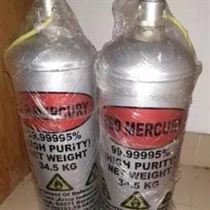
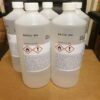
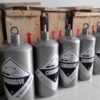
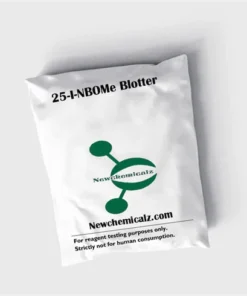
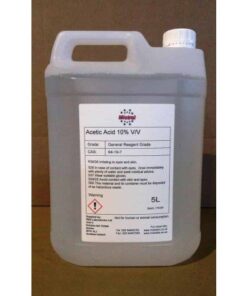
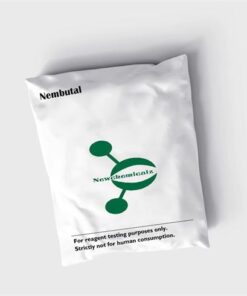
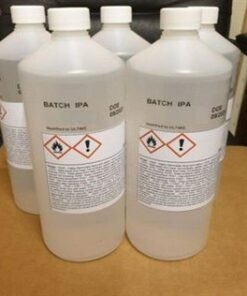
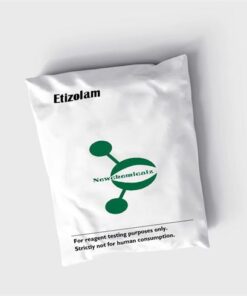
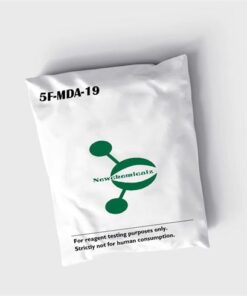
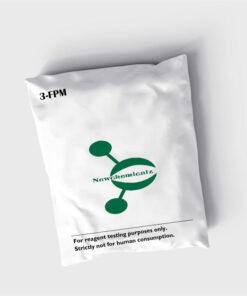
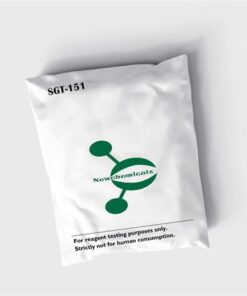
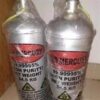
Reviews
There are no reviews yet.